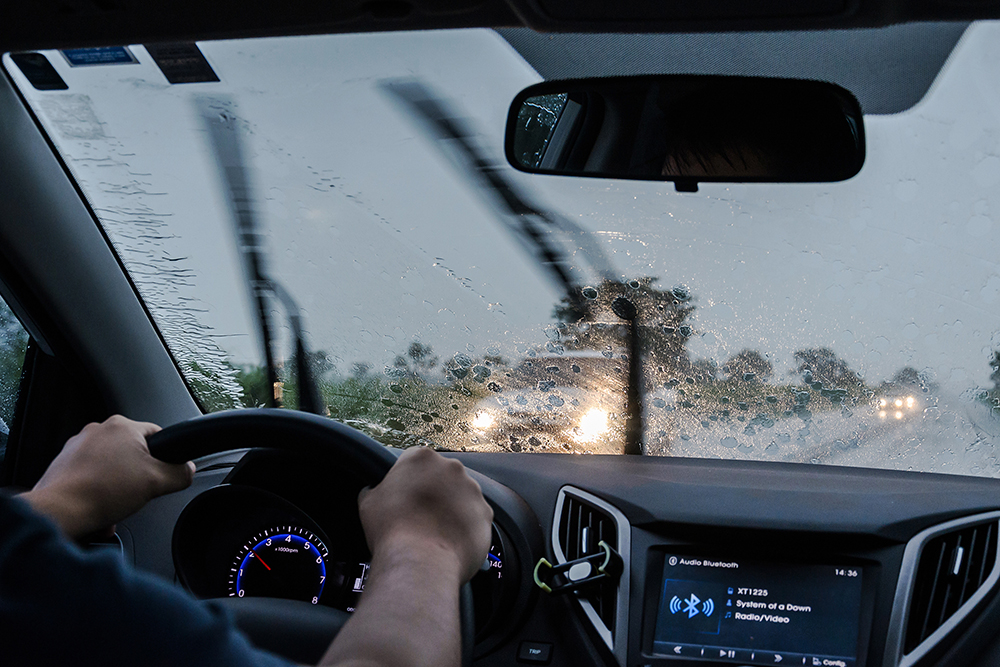Winter Wiper Blades: How To See The Trees From the Forest

Whether you will be driving through the winter storms of the Rocky Mountains or the milder yet rainy weather in the Southeast, the right wiper blade can improve visibility and safety.
“Inexpensive all-rubber blades can get really stiff in cold weather, and you start to get chattering since they can’t make good contact with the contour of your windshield,” says Jeffrey Ross of Continental Automotive Systems. “When that happens, they will not be able to effectively clear rain or snow.”
Ross explains that frequency of use and type of climate affect blade longevity and added that worn blades can create multiple problems.
“The problems are visibility and overall driver awareness. I change mine out at least once a year since I live in an area with four distinct seasons and want to ensure I have the best visibility at all times."
Years ago, rubber blades were installed on most of the vehicles because they were inexpensive, but they became brittle in cold weather and mushy in heat. They wore out quickly compared to the new technology used in making blades today.
“There’s an entire aisle of choices,” says Lori Bachman, who works with Ross at Continental Automotive Systems. “It can be a bit confusing. The choice comes down to where drivers live and where they travel.”
For the people who live in areas of heavy rain, Bachman suggests blades with beam technology, a design that employs a “memory curve” that helps the blade retain and hold its shape to the windshield, thus applying consistent pressure.
For drivers who live in climates with a lot of snow, or who may drive to areas to ski often during the winter, Bachman suggests “winter blades” that retain flexibility during a snowstorm or while a car is parked outdoors in freezing temperatures.
Bachman says that all-weather blades will work well for most drivers who don’t plan to live or drive in extreme weather changes throughout the winter.
No matter which area you live in, Bachman stresses that it is important to buy quality wiper blades that will improve the driver’s visibility.
Ross agrees, adding, “Consumers are price conscious. Investing in a quality blade means you will get better performance and won’t have to replace the blades as frequently.”
Safety experts recommend replacing your wiper blades every six to 12 months, depending on how much your car is exposed to a variety of weather elements.
How to select the right blades for your car:
- Blades need to be replaced if they are rubbing, streaking, smearing or you hear chattering sounds when the blades are moving across your windshield.
- Should you hear scratching noises as your blades move across the windshield, they need to be changed immediately to prevent windshield damage.
- Blades with a direct-fit connection are recommended. Other blade assemblies have multiple adapters and could be difficult to install, especially during a rainstorm.
- Blades that use synthetic formulations perform better and last longer than traditional rubber blades.
- Winter blades should be considered if you live in areas with a lot of snow and frost. Winter Blades are sealed or covered to protect the wiper assembly from snow and ice accumulation.
- Blades with beam technology are designed to fit the curve of your windshield. They provide steady pressure across the entire blade. This helps them stay in contact with the windshield during heavy winds and freeway speeds.
- Replace the rear wiper blade on SUVs or mini-vans. These wipers are smaller but still maintain the same guidelines as those for front windshields.
- Are your blades frayed, cracked or stiff? Time for a new set before the old ones damage your vehicle’s windshield.